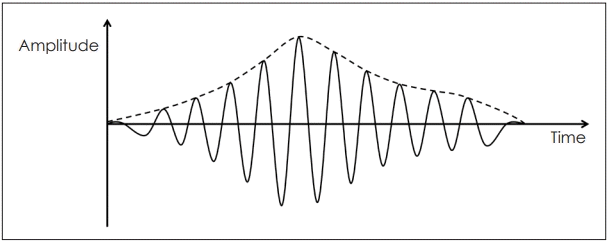1. Clark GM, Tong YC, Black R, Forster IC, Patrick JF, Dewhurst DJ. A multiple electrode cochlear implant. J Laryngol Otol. 1977; 91(11):935–45.

3. Bell B, Stieger C, Gerber N, Arnold A, Nauer C, Hamacher V, et al. A self-developed and constructed robot for minimally invasive cochlear implantation. Acta Otolaryngol. 2012; 132(4):355–60.

4. Park HJ, Lee JY, Yang CJ, Park JW, Kang BC, Kang WS, et al. What is the sensitive period to initiate auditory stimulation for the second ear in sequential cochlear implantation? Otol Neurotol. 39(2):177–83.

5. Nelson PB, Jin SH, Carney AE, Nelson DA. Understanding speech in modulated interference: cochlear implant users and normalhearing listeners. J Acoust Soc Am. 2003; 113(2):961–8.

6. Mirza S, Douglas SA, Lindsey P, Hildreth T, Hawthorne M. Appreciation of music in adult patients with cochlear implants: a patient questionnaire. Cochlear Implants Int. 2003; 4(2):85–95.

7. McDermott HJ. Music perception with cochlear implants: a review. Trends Amplif. 2004; 8(2):49–82.

8. Limb CJ. Cochlear implant-mediated perception of music. Curr Opin Otolaryngol Head Neck Surg. 2006; 14(5):337–40.

9. Boëx C, Baud L, Cosendai G, Sigrist A, Kós MI, Pelizzone M. Acoustic to electric pitch comparisons in cochlear implant subjects with residual hearing. J Assoc Res Otolaryngol. 2006; 7(2):110–24.

10. Gfeller K, Lansing CR. Melodic, rhythmic, and timbral perception of adult cochlear implant users. J Speech Hear Res. 1991; 34(4):916–20.

11. Moore BC. The role of temporal fine structure processing in pitch perception, masking, and speech perception for normal-hearing and hearing-impaired people. J Assoc Res Otolaryngol. 2008; 9(4):399–406.

12. Chang YS, Moon IJ. Definition and clinical implication of temporal fine structure. Korean J Otorhinolaryngol-Head Neck Surg. 2018; 61(1):1–8.

13. Hopkins K, Moore BC, Stone MA. Effects of moderate cochlear hearing loss on the ability to benefit from temporal fine structure information in speech. J Acoust Soc Am. 2008; 123(2):1140–53.

14. Gordon EE. Primary measures of music audiation. Chicago: GIA Publications, Inc;1979. p. 42–9.
15. Fitzgerald D, Fitzgerald H, Brockmeier SJ, Searle O, Grebenev L, Nopp P. Musical Sounds in Cochlear Implants (MuSIC) Test. Innsbruck: MED-EL;2006.
16. Kang R, Nimmons GL, Drennan W, Longnion J, Ruffin C, Nie K, et al. Development and validation of the University of Washington Clinical Assessment of Music Perception test. Ear Hear. 2009; 30(4):411–8.

17. Roy AT, Scattergood-Keepper L, Carver C, Jiradejvong P, Butler C, Limb CJ. Evaluation of a test battery to assess perception of music in children with cochlear implants. JAMA Otolaryngol Head Neck Surg. 2014; 140(6):540–7.

18. Helms J, Weichbold V, Baumann U, von Specht H, Schön F, Müller J, et al. Analysis of ceiling effects occurring with speech recognition tests in adult cochlear-implanted patients. ORL J Otorhinolaryngol Relat Spec. 2004; 66(3):130–5.

19. Zeng FG, Popper AN, Fay RR. Auditory prostheses: New horizons. 1st ed. New York: Springer Science & Business Media;2011. p. 305–39.
20. Looi V, McDermott H, McKay C, Hickson L. Music perception of cochlear implant users compared with that of hearing aid users. Ear Hear. 2008; 29(3):421–34.

21. Looi V, McDermott H, McKay C, Hickson L. The effect of cochlear implantation on music perception by adults with usable pre-operative acoustic hearing. Int J Audiol. 2008; 47(5):257–68.

22. Galvin JJ 3rd, Fu QJ, Nogaki G. Melodic contour identification by cochlear implant listeners. Ear Hear. 2007; 28(3):302–19.

23. El Fata F, James CJ, Laborde ML, Fraysse B. How much residual hearing is ‘useful’ for music perception with cochlear implants? Audiol Neurootol. 2009; 14 Suppl 1:14–21.

24. Vongpaisal T, Trehub SE, Schellenberg EG. Identification of TV tunes by children with cochlear implants. Music Percept. 2009; 27(1):17–24.

25. Xu L, Zhou N, Chen X, Li Y, Schultz HM, Zhao X, et al. Vocal singing by prelingually-deafened children with cochlear implants. Hear Res. 2009; 255(1-2):129–34.

26. Franks JR. Judgments of hearing aid processed music. Ear Hear. 1982; 3(1):18–23.

27. Gfeller K, Christ A, Knutson J, Witt S, Murray K, Tyler R. Musical backgrounds, listening habits, and aesthetic enjoyment of adult cochlear implant recipients. J Am Acad Audiol. 2000; 11(7):390–406.
28. Looi V, McDermott H, McKay C, Hickson L. Comparisons of quality ratings for music by cochlear implant and hearing aid users. Ear Hear. 2007; 28(2 Suppl):59S–61.

29. Sucher CM, McDermott HJ. Bimodal stimulation: benefits for music perception and sound quality. Cochlear Implants Int. 2009; 10 Suppl 1:96–9.

30. Chen JK, Chuang AY, McMahon C, Hsieh JC, Tung TH, Li LP. Music training improves pitch perception in prelingually deafened children with cochlear implants. Pediatrics. 2010; 125(4):e793–800.

31. Looi V, King J, Rebecca Kelly-Campbell R. A music appreciation training program developed for clinical application with cochlear implant recipients and hearing aid users. Semin Hear. 2012; 33(4):361–80.

32. Gfeller K, Witt S, Adamek M, Mehr M, Rogers J, Stordahl J, et al. Effects of training on timbre recognition and appraisal by postlingually deafened cochlear implant recipients. J Am Acad Audiol. 2002; 13(3):132–45.

33. Jung KH, Cho YS, Cho JK, Park GY, Kim EY, Hong SH, et al. Clinical assessment of music perception in Korean cochlear implant listeners. Acta Otolaryngol. 2010; 130(6):716–23.

34. Choi WJ, Oh SH, Bahang J. Efficacy of music training on speech recognition and working memory in children wearing cochlear implants. Audiol Speech Res. 2017; 13(1):70–7.





 PDF
PDF Citation
Citation Print
Print




 XML Download
XML Download